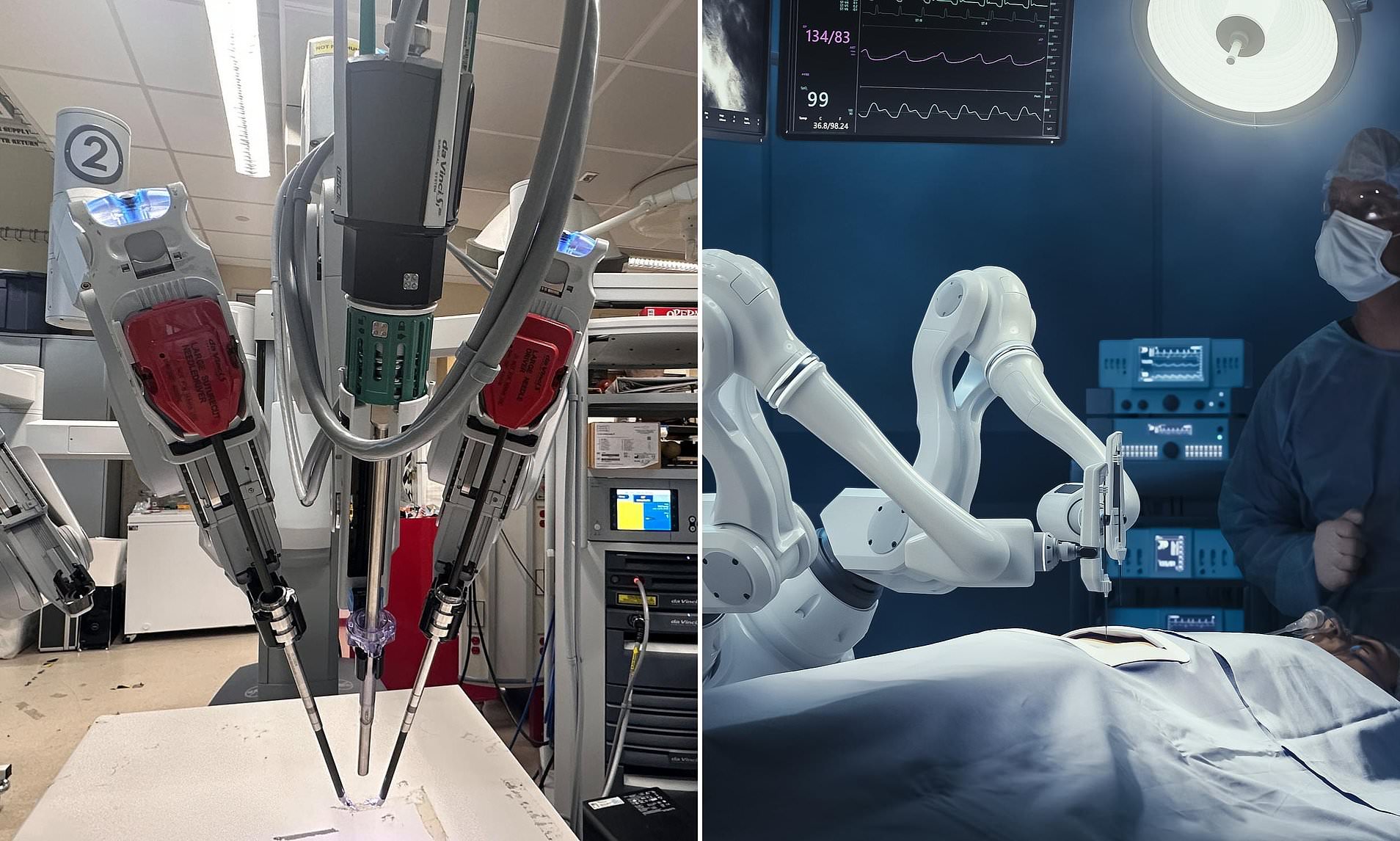Advancements in Robotic Surgery: A New Era in Healthcare
In the coming decade, robots equipped with artificial intelligence (AI) could be performing surgeries on humans, following successful trials on pigs. These machines have demonstrated their ability to carry out complex procedures, such as removing a gallbladder from a pig using tools designed for cutting, clipping, and grasping soft tissue.
The robot, powered by AI technology similar to that used in systems like ChatGPT, was trained by watching videos of human surgeons performing similar operations. It then executed the same procedure eight more times on dead pigs at John Hopkins University, achieving a 100% success rate in just over five minutes. This achievement has sparked optimism among experts, who believe that robots could replicate the skills of the world’s top surgeons, potentially revolutionizing healthcare.
While these machines were slightly slower than human doctors, their movements were more fluid and efficient, making shorter paths between tasks, according to the American researchers involved. Mistakes were corrected during the process, and different tools were requested based on anatomical variations, as noted in the study published in Science Robotics. The research team described their findings as “a milestone toward clinical deployment of autonomous surgical systems.”
The procedure involved 17 steps, including cutting the gallbladder from the liver, applying six clips in a specific order, and removing the organ. “We were able to perform a surgical procedure with a really high level of autonomy,” said Axel Krieger, an assistant professor of mechanical engineering at Johns Hopkins. He added that this was a significant advancement, as prior work had focused on individual tasks like suturing, while this study represented a full surgical procedure.
The Royal College of Surgeons described the breakthrough as “an exciting development that shows great promise.” A leading British expert on robotic surgery called the results “impressive” and “novel,” suggesting they take the field further into the realm of automation. John McGrath, a robotic surgery expert, highlighted that current robotic surgeries in the NHS, which number around 70,000 annually, are all led by humans, except for some semi-autonomous bone-cutting procedures in hip and knee surgeries.
Plans are already underway to expand the use of robotic surgery within the UK’s healthcare system. Heath Secretary Wes Streeting emphasized the importance of increasing robotic surgery in reforming the NHS and reducing waiting times over the next ten years. The NHS has also stated that nine out of ten keyhole surgeries in the next decade will be performed by robots, a significant increase from the current one in five.
Dr. McGrath, chair of NHS England’s robotics steering committee, believes that surgeons may eventually oversee multiple operations simultaneously, performing simpler procedures like gallbladder removals or hernia operations more efficiently. He also suggested that robots could offer greater precision, causing less damage to surrounding tissues.
However, there are still challenges ahead. Robots may react differently to a living body compared to a dead animal, and factors such as flowing blood, fluid on the camera, injuries, or smoke from cauterization must be addressed. Nuha Yassin, the lead on robotic surgery at the Royal College of Surgeons of England, stressed the need for careful exploration of the nuances in this rapidly evolving field to ensure safe and effective translation into human trials.
Only through thorough evaluation can this approach move toward becoming a sustainable model for the future of healthcare.







